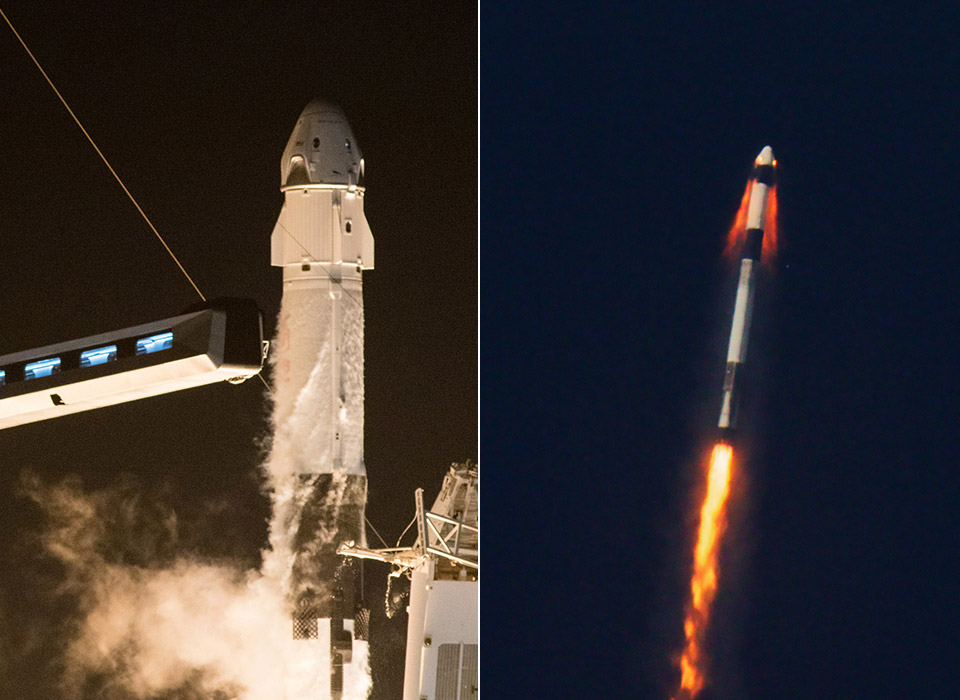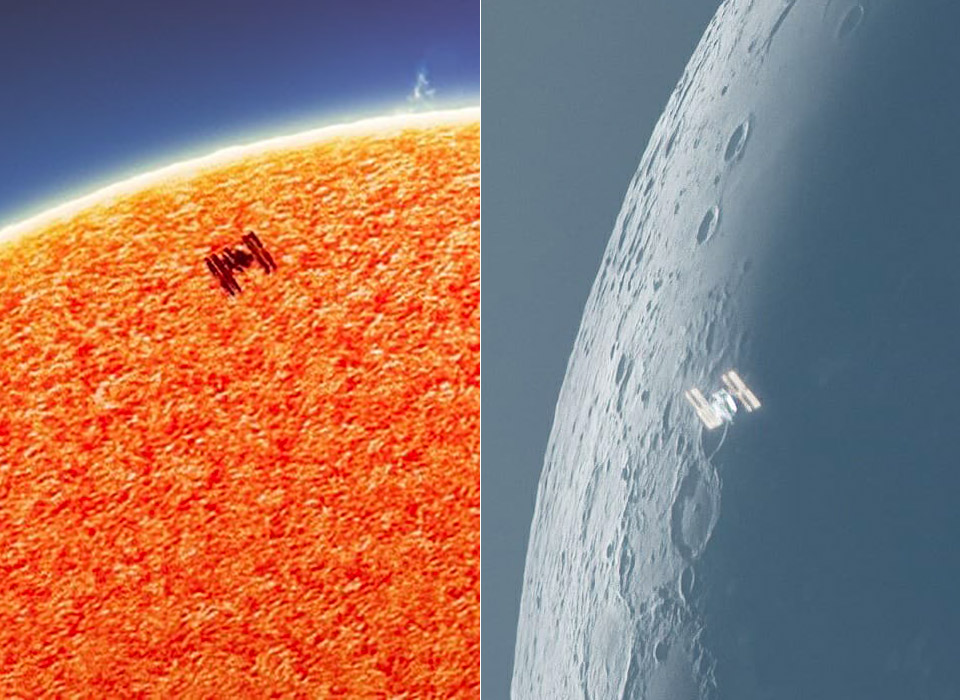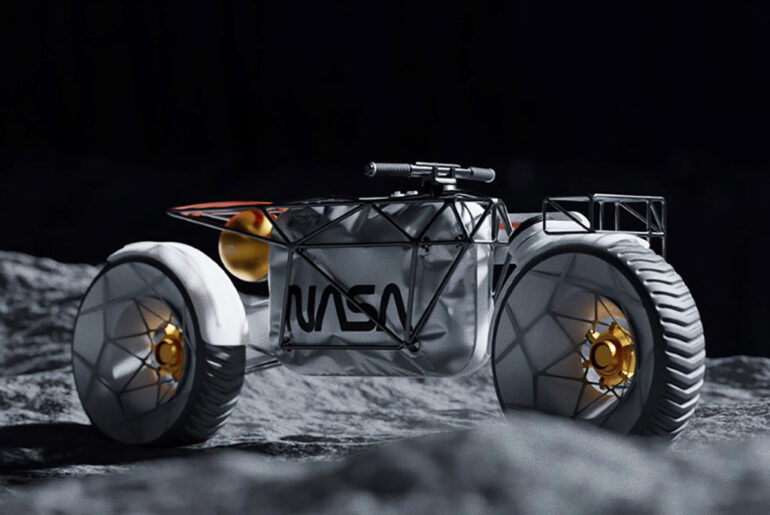
A team of astronomers from the University of Texas at Austin have just proposed a liquid-mirror telescope installation on the moon to study some of the earliest stars in the universe. Instead of glass, the telescope’s mirror would be made of liquid, since it’s lighter, and more cost efficient, to transport to the moon. More specifically, it would be a spinning vat of with metallic liquid (ionic liquid salts) on top, thus making it reflective. It would most likely be installed in a crater at the north or south pole.

After a 27.5-hour journey, the SpaceX Crew Dragon Resilience spacecraft has docked with the International Space Station. The four astronauts – Victor Glover, Mike Hopkins, Shannon Walker, and Soichi Noguchi – will join Kate Rubins, Sergey Ryzhikov and Sergey Kud-Sverchkov, thus expanding the Expedition 64 crew to seven. They will remain at the ISS for six-months, while Soyuz MS-17 will return the Roscosmos cosmonauts to Earth in April 2021. Read more for two videos and additional information.

Photo credit: SpaceX
At approximately 7:27 pm EST, a SpaceX Falcon 9 rocket lit up the nighttime sky over Cape Canaveral, Florida, carrying four NASA astronauts to the International Space Station. Around twelve minutes later, the Dragon capsule, named Resilience, on the rocket’s nose separated from the rocket to began its 27.5-hour journey to the International Space Station. This marks the first operational trip into orbit for SpaceX’s Crew Dragon spacecraft, which just received NASA certification this past week. Read nore for two videos and additional information.

Photo credit: Peta Pixel
Astrophotographer Jean-Luc Dauvergne spent 6-nights at the Pic-du-Midi observatory in the French Pyrenees capturing the best global map of Mars yet from Earth. His team used the observatory’s 1-meter telescope and its native 17000mm focal length. The telescope was originally built to help NASA researchers prepare for the Apollo missions in the early 1960s, and to this day, it’s still one of the best in the world to study planetary surfaces in the visible part of the spectrum.

Photo credit: Andrew Fabishevskiy
NASA’s original Lunar Roving Vehicle (LRV) is essentially a battery-powered four-wheeled rover used on the Moon in the last three missions of the American Apollo program (15, 16, and 17) during 1971 and 1972. What you may not know is that they were all built by Boeing, with each weighing in at 460-pounds and having a maximum payload mass of 1,080-pounds. They were transported to the lunar surface folded up in the Lunar Module’s Quadrant 1 Bay.

The United Launch Alliance (ULA) Atlas V rocket successfully blasted off into space today (November 13) from Space Launch Complex 41 at Cape Canaveral Air Force Station in Florida at 5:32 p.m. EST (2232 GMT). It’s transporting classified payload for the National Reconnaissance Office, the same branch that manages the U.S. government’s fleet of spy satellites. The payload has been named NROL-101, marking ULA’s fifth launch so far in 2020. Read more for a video of the launch and additional information.

Photo credit: Elon Musk
NASA and SpaceX are making final preparations for the launch of Crew-1, which is made up of astronauts Shannon Walker, Victor Glover, and Mike Hopkins, and Japan Aerospace Exploration Agency (JAXA) astronaut Soichi Noguchi. Once they’ve arrived at the International Space Station, the team will work in low-Earth orbit by becoming space scientists for the next six months. One investigation will be on food physiology to document the effects of dietary improvements on immune function and the gut microbiome and how those improvements can help crews adapt to spaceflight. Read more for a video and additional information.

Researchers at NASA’s Jet Propulsion Laboratory revealed for the first time what Europa’s glow could look like, and what it might reveal about the composition of ice on its surface. Put simply, various salty compounds react differently to the radiation and emit their own unique glimmer. Without at telescope, this glow would look sometimes slightly green, slightly blue or white and with varying degrees of brightness, depending on what material it is.

Photo credit: Julie Roussy, McGill Graphic Design and Getty Images
Scientists have discovered K2-141b, an exoplanet that is half the size of Earth but orbits so close to its star that two-thirds of the surface is permanently sunlit. This means that almost half of the planet is molten magma, thus the atmosphere created by vaporized rocks spreads around the planet, forming clouds and rains or snows down onto the molten surface below. When that is paired with wind speeds above 3,100 miles per hour, or faster than the speed of sound on Earth, things get a bit strange.

Photo credit: Andrew McCarthy
Astrophotographer Andrew McCarthy from Sacramento, California managed to capture two amazing images of the International Space Station crossing the Moon and Sun from his backyard as well as some other local areas. For those who don’t know, the space station orbits Earth approximately every 90-minutes, or in other words, each 24-hours, it comes into view about 16-times. With that said, it’s still quite tricky to get the perfect weather conditions to capture clear images of the ISS. Read more for additional pictures and information.





